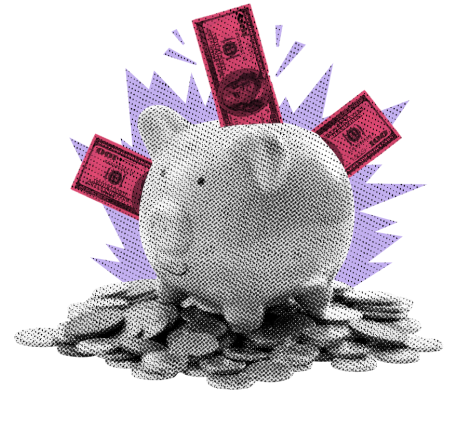Dependence Day: The Fed, the President, and the Power Struggle Over Rates

The Fed’s independence isn’t guaranteed. History shows presidents push for cuts–and this time, the stakes may be even higher.
KEY TAKEAWAYS
-
The Fed’s independence is under political pressure
-
Trump is using the IEEPA to enact tariffs unilaterally
-
Lisa Cook faces a scandal that is likely to end up in the courts
-
Markets are thirsty for lower rates amid weak jobs data
-
NVIDIA’s earnings may matter more to portfolios than Fed drama
MY HOT TAKES
-
The Fed’s independence is more fragile than people admit
-
Tariffs and rates are two sides of the same political-economic coin
-
Trump’s tactics may be uncomfortable–but they’re legal
-
Markets ultimately care about data, not hardhats or scandals
-
NVIDIA is the real short-term driver of wealth this week
-
You can quote me: “Forget Powell and Trump—NVIDIA might move your wealth more than both combined.”
Dependence day. The Fed just can’t seem to get out of the news these days. Let’s get this out of the way first–the Fed SHOULD be in the news. It’s no joke when I call the FOMC members the most powerful policy makers in the world and Chairman Powell the most powerful banker. It’s the United States Federal Reserve Bank of the largest economy in the world. The very same economy that has in recent months weaponized trade duties to possibly gain some advantage over its adversaries–though at the moment the only advantage seems to be revenues collected by Customs and Border Patrol at the expense of mostly corporations and, in some cases, you and me.
Residing within that economy is the central bank which can cause funds to whip around the globe violently with the throw of a financial policy lever. So powerful are those levers that even the mere mention of using them can change the mood and direction of global markets. That makes Fed policy a very powerful tool.
Before, I mentioned tariffs and trade, another powerful tool. Those fit under what we broadly refer to as fiscal policy instruments. Those are under the control of the executive and legislative branches of government. In case you haven’t realized recently, those powers have been wielded by the executive branch almost exclusively. Though it may make some people uncomfortable, fiscal policy is operating the way it was designed to.
The President can only create law if his policies are aligned with Congress and, as evidenced by the passing of the One Big Beautiful Bill Act on partisan lines, they are economically aligned at the moment. That brings up a very current question of the President's unilateral enacting of tariffs. For the same reason the two government branches needed to work together to enact OBBBA, they technically needed to collaborate to enact trade tariffs.
However, there is a twist in the form of the IEEPA, the International Emergency Economic Powers Act of 1977. The law affords the President economic power to act against any foreign economic threat (non-military). It was originally created to counter threats from rogue and enemy states. Interestingly, the ‘77 law was passed to weaken the President’s powers which were even more broad-reaching prior. In any case, President Trump declared a state of emergency and has used the powers granted to him by the IEEPA to enact what we broadly now refer to as “liberation day tariffs.” Those tariffs–which are currently active–were given life by a unilateral act of the legislative branch. Congress is powerless to intervene, but the judicial branch may not be. Also designed as a check and balance mechanism, the courts are currently being used to challenge the President’s trade policy. Those challenges are currently in the lower courts but are likely to end up in the Supreme Court which has shown a willingness to grant the President broad power.
So, there are two powerful economic tools, fiscal policy and monetary policy. The President has been relying on monetary policy instruments quite widely since his inauguration.
Let's consider monetary policy. That is under the control of the Federal Reserve. There is no law that enables a President to manipulate interest rates, though the President can technically control currencies under the IEEPA. President Trump has not, to date at least, shown interest in manipulating currency exchange rates. However, he is very interested in manipulating interest rates. And for good reason. They are not only a potentially stimulative economic tool, but they are also a limiting factor for government borrowing and, ultimately, the Federal Deficit. As the federal budget is financed in part through debt, higher interest rates make that financing more expensive thus exacerbating the already untenable deficit. Trump, rightly so, has been quite eager to lower the Federal deficit. Some could change the argument and state that the President wants lower interest rates to support his policies. Either way, almost all presidents seek these concessions in one way or another–this is in no way unique to President Trump–all presidents generally like lower interest rates. But despite wanting lower interest rates, the President can do very little to get them other than moral suasion. In case you haven’t noticed, this President has taken moral suasion to an entirely new level.
We have seen the President threaten to remove the Fed’s top banker then back down after the markets reacted violently. We have seen the President show up at the Fed’s headquarters wearing a hardhat and question the Chairman’s handling of a building renovation project. We have also seen the President publicly conduct a job search for the Fed Chairman’s successor when his term ends in the spring of 2026. More recently a vacancy at the Fed has allowed the President to name a close economic ally to the bank, temporarily at least. Those have all raised some eyebrows as the moves come dangerously close to manipulating what is supposed to be an independent institution.
And now, the latest, a Biden-appointed FOMC Governor, Lisa Cook has been under scrutiny for potentially lying on some mortgage applications claiming to use what appear to be investment properties as her primary residence in order to secure better loan terms. Lying on mortgage applications can get you in trouble and Ms. Cook seems to be in a bit of it. So much so that the President has publicly–in social media at least–sought to remove the governor. Governor Cook, according to the press, claims that she will challenge the President legally, not on grounds that she didn’t lie, but on grounds that the President does not have the power to remove her based on the allegation.
Now, all this seems messy and very Washington-insider scandal type of stuff, but it is important for us to understand. Interest rates can, will, and already have affected your wealth. We have discussed this quite a bit in recent days. The economy is starting to falter a bit as evidenced by a recent spate of weak employment figures. Strong employment is crucial for a strong economy. Lower interest rates, theoretically at least, can strengthen the weakening unemployment situation and help the economy regain its strength.
Also, and we need to mention this, your portfolio is thirsty for lower interest rates. Why? Because the rally in equities is also starting to falter as stocks have become expensive. Interest rates have become a catalyst for rallies of late, and a Fed cut might be the right stimulus to re-ignite the passions of the market.
So, yeah, we would like to see lower interest, but is the market willing to accept the firing of an FOMC governor to get those rate cuts? Well, my friends, we are going to learn the answer to that question in the days to come. Interestingly, Lisa Cook is a known dove and has expressed concern for the recent weak employment numbers, so removing her may not even be necessary to get the ‘yea’ vote needed for a rate cut next month.
At the end of the day, the President has kept the pressure on the Fed. It may be uncomfortable and his tactics questionable, but as long as they are legal, things should not get too far out of hand. All this noise, unfortunately, is a diversion from what really matters most–the economy. Interest rates at the end of the day will ultimately be set based on the economic numbers that we get later this week (PCE Inflation Index), next week’s employment numbers, and the CPI we get next month ahead of the FOMC meeting. Oh, did I forget to mention the other thing that has not been able to get out of the news lately–AI? NVIDIA, the mother of the AI bull trade, will announce its earnings tomorrow afternoon. NVIDIA is not a Government agency and the President has not sought to fire its CEO, but I suspect its performance will determine the success of your portfolio even more than interest rates. Please, let’s not lose focus on what is actually important.
YESTERDAY’S MARKETS
Stocks erased some of Friday’s gains yesterday as traders thought better of Powell’s comments on Friday. Trump’s threat to remove an FOMC governor has caused a slight shift in the dollar, treasury yields, and the yield curve, though it's too early to determine if the bond vigilantes will ride back into town for the showdown. Traders are jumpy ahead of tomorrow night’s big earnings release.

NEXT UP
-
Durable Goods Orders (July) are expected to have declined by -3.8% after falling by -9.4% in June. This will be watched closely for signs that tariffs are biting.
-
FHFA House Price Index (June) may have slipped by -0.1% after slipping by -0.2% in the prior period.
-
Conference Board Consumer Confidence (August) probably eased to 96.5 from 97.2.
-
Important earnings today: Okta and MongoDB.
DOWNLOAD MY DAILY CHARTBOOK HERE 📈
.png)

